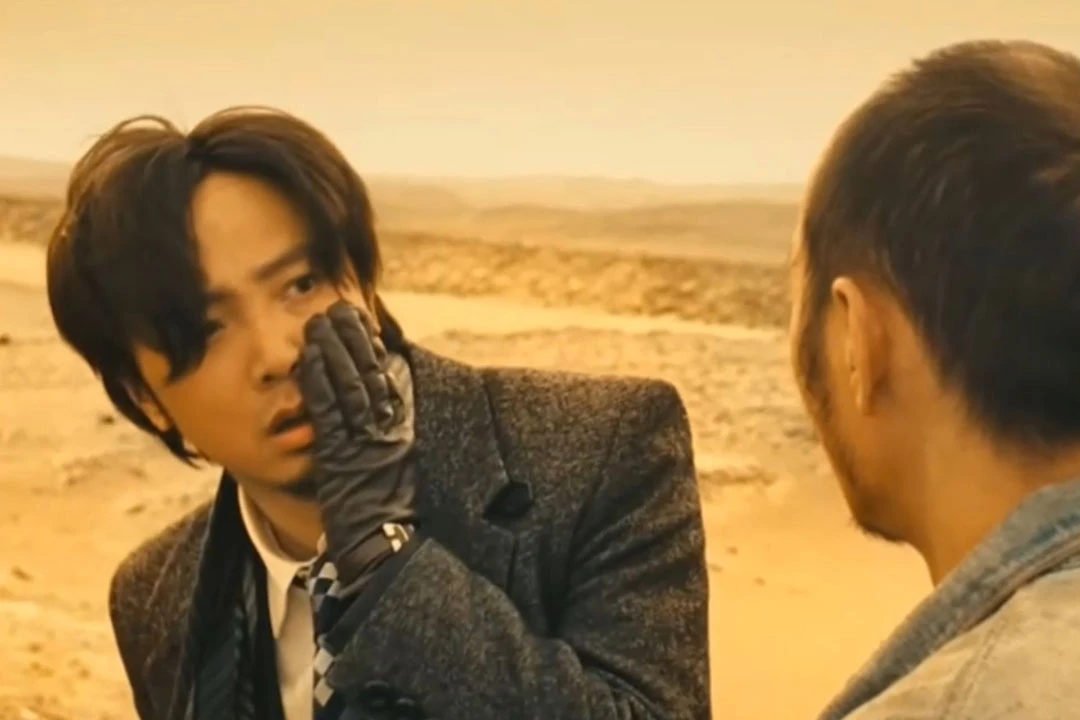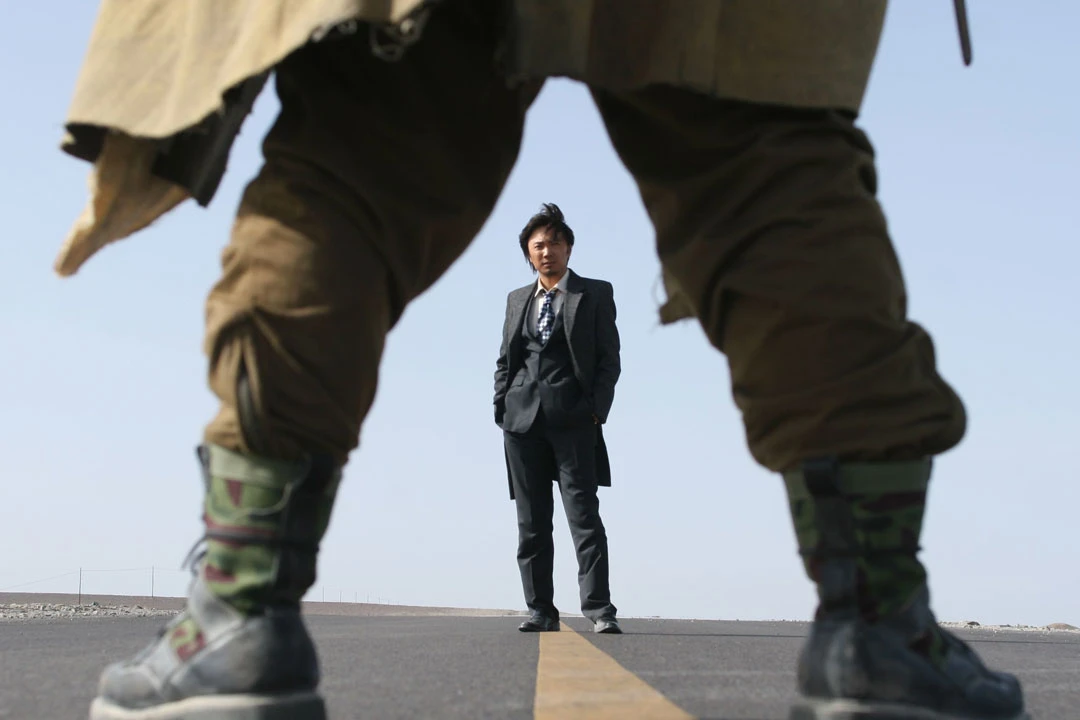In the vast tapestry of world cinema, certain films emerge as powerful reflections of their cultural landscapes, offering viewers a window into worlds both familiar and alien. One such cinematic gem, born from the creative vision of a renowned Chinese director, takes us on a harrowing journey through the stark and unforgiving terrain of China's northwestern frontier. This groundbreaking road movie, set against the backdrop of the Gobi Desert, serves as a profound meditation on human nature, morality, and the relentless pursuit of self-interest.

Dust and Destiny: Unveiling the Savage Beauty of the Northwest
No Man Land's (无人区) setting is as much a character as any of its human protagonists. Stretching across the vast expanses of Gansu and Xinjiang provinces, the Gobi Desert provides a breathtaking and treacherous stage for the unfolding drama. The director's camera captures the raw, untamed beauty of this harsh landscape with a reverence that borders on the spiritual. Sun-baked dunes, wind-carved rock formations, and endless horizons create a visual symphony that is at once awe-inspiring and deeply unsettling.
This choice of location is far from arbitrary. The Northwest, with its reputation as China's "Wild West," serves as a powerful metaphor for the moral frontier that the characters must navigate. In this lawless expanse, far from the reach of civilization's comforts and constraints, individuals are stripped bare, their true natures exposed like bones bleaching in the desert sun.
The film's journey takes viewers through a series of iconic locations, each adding its own layer of significance to the narrative. The ancient city of Dunhuang, with its rich Buddhist heritage, stands in stark contrast to the moral vacuum of the surrounding wilderness. The industrial landscapes of Karamay serve as a reminder of humanity's relentless drive to tame and exploit even the most inhospitable environments.
Through masterful cinematography, the film captures the changing moods of the desert, from the harsh, unforgiving glare of midday to the eerie, otherworldly glow of twilight. These visual shifts mirror the inner transformations of the characters as they journey deeper into both the physical landscape and their own psyches.
Morality's Mirage: Human Nature in the Face of Desolation
At its core, this film is an unflinching exploration of the human condition when stripped of societal constraints. As the characters traverse the barren landscape, we witness a gradual unraveling of civilized behavior, revealing the savage heart that beats beneath the veneer of social norms.
The narrative weaves a complex tapestry of motivations and conflicts, with each character driven by their own desires and fears. In this unforgiving environment, where resources are scarce and survival is uncertain, we see how quickly moral compasses can spin out of control. The film forces us to confront uncomfortable truths about the lengths to which people will go when driven by desperation or greed.
Yet, even as it exposes the darker aspects of human nature, the story resists simple judgments. Each character is rendered with depth and nuance, their actions, however reprehensible, rooted in recognizable human impulses. This complexity challenges viewers to examine their own moral boundaries and question how they might act when pushed to the extreme.
The film's exploration of morality extends beyond individual actions to encompass broader societal issues. Through its portrayal of the interactions between different characters - locals and outsiders, the powerful and the powerless - it offers a biting commentary on social inequality, corruption, and the exploitation of natural resources. These themes, while grounded in the specific context of China's development, resonate universally, touching on global concerns about environmental degradation and the human cost of unchecked progress.
The director's use of dark humor serves as a powerful tool in this moral exploration. Moments of absurdist comedy punctuate the tension, providing brief respites that only serve to heighten the overall sense of unease. This juxtaposition of humor and horror creates a disorienting effect, mirroring the characters' own loss of moral bearings in the face of their extreme circumstances.
The film's journey to the screen was itself a testament to perseverance in the face of adversity. Despite facing a four-year ban, likely due to its unflinching portrayal of social issues, it ultimately triumphed, finding both commercial success and critical acclaim. Its selection for the main competition at the prestigious Berlin International Film Festival underscores its artistic merit and global relevance.
This landmark Chinese film stands as a powerful exploration of human nature in extremis. Through its masterful blend of stunning visuals, complex characterizations, and profound thematic depth, it offers viewers a journey that is as intellectually challenging as it is visually arresting. By setting its tale of moral decay against the backdrop of China's wild northwest, the film creates a microcosm of broader societal issues, inviting reflection on the nature of progress, the limits of morality, and the indomitable yet often destructive spirit of human ambition.
As we follow the characters' perilous journey through the desert's unforgiving terrain, we are compelled to confront our own moral boundaries and question the foundations of civilized behavior. In the end, like the mirages that shimmer on the desert horizon, the film suggests that our notions of morality and civilization may be more fragile and illusory than we care to admit, easily distorted by the heat of our own desires and fears.


